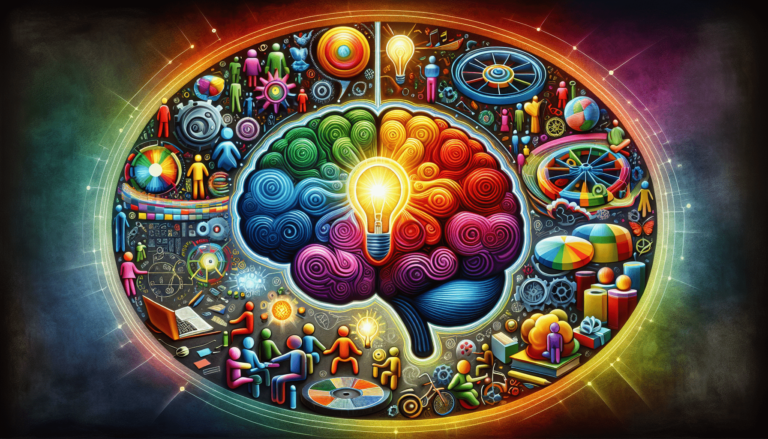The Power Of Storytelling In Personal And Professional Life
Imagine a world where your words have the power to captivate, inspire, and connect with others on a profound level. In both our personal and professional lives, storytelling has the remarkable ability to leave a lasting impact, allowing us to communicate our thoughts, experiences, and ideas in a way that resonates deeply with others. Whether we are sharing a personal anecdote at a dinner table or presenting a persuasive pitch to a room full of colleagues, the art of storytelling holds the key to compelling communication. By harnessing the power of storytelling, we can create meaningful connections, motivate others, and ultimately shape our own narratives in profound and meaningful ways.
The Importance of Storytelling
Storytelling is a powerful tool that allows us to connect with others on a deeper level, inspire and motivate them, build trust and relationships, and enhance our communication skills. Whether we are sharing personal stories with our loved ones or utilizing storytelling techniques in our professional lives, the art of storytelling holds great significance in shaping our experiences and impacting those around us.
Storytelling in Personal Life
In our personal lives, storytelling plays a fundamental role in preserving and sharing our family history. Through stories passed down through generations, we are able to keep alive the narratives of our ancestors, their struggles, triumphs, and the values they held dear. These stories not only serve as a reminder of our roots but also give us a sense of belonging and provide us with valuable lessons and values to pass on to future generations.
Furthermore, storytelling helps us create stronger bonds with our loved ones. When we share personal stories with our friends and family, we allow them a glimpse into our experiences, emotions, and perspectives. This vulnerability builds trust and fosters a deeper connection, leading to more meaningful relationships.
Lastly, storytelling enables us to find personal meaning and identity. By reflecting on our own stories and experiences, we gain a better understanding of who we are, where we come from, and what truly matters to us. Through storytelling, we are able to explore our own narratives and find our own unique purpose in life.

Storytelling in Professional Life
In the realm of our professional lives, storytelling can be a powerful tool for communication and engagement. One way in which storytelling can be utilized is in communicating company values and vision. By sharing stories that exemplify these values, leaders are able to inspire employees and create a sense of purpose and alignment within the organization.
Moreover, storytelling can be instrumental in engaging employees and colleagues. When leaders and team members share personal stories of success, failure, and perseverance, they create an environment where others feel valued and motivated. This sense of camaraderie and shared experiences fosters teamwork and collaboration, ultimately leading to increased productivity and job satisfaction.
Additionally, storytelling is an effective means of persuading and influencing others. By crafting compelling narratives, we can convey our ideas, proposals, and recommendations in a more impactful way. Stories have a way of capturing attention, evoking emotions, and appealing to the beliefs and values of our audience, making our message more persuasive and memorable.
Lastly, storytelling can make presentations more memorable. By incorporating storytelling elements such as relatable characters, a well-structured plot, conflict and resolution, and emotional appeal, we can captivate our audience and leave a lasting impression. Stories have the power to bring data and facts to life, making information more relatable and easier to remember.
Elements of a Compelling Story
A compelling story is one that engages and captivates the audience. It is important to consider several elements when crafting a story that resonates with others.
Engaging and relatable characters are essential to the success of a story. Characters that are well-developed and relatable enable the audience to connect with the story on a personal level. When we see ourselves or others we can relate to in the characters, it creates a sense of empathy and understanding.
A well-structured plot is crucial in holding the audience’s attention. A story with a clear beginning, middle, and end allows for a smooth flow and a logical progression of events. This structure helps the audience follow along and stay engaged throughout the story.
Conflict and resolution add depth and excitement to a story. These elements create tension and keep the audience invested in the outcome. Conflict challenges the characters and their beliefs, while the resolution provides a sense of closure and satisfaction.
Emotional appeal is another important aspect of a compelling story. By incorporating emotions such as joy, sadness, fear, or triumph, storytellers can elicit a response from their audience. Emotions make the story more memorable and impactful, leaving a lasting impression.

Developing Storytelling Skills
Storytelling is a skill that can be developed and improved over time. By following a few key strategies, we can become more effective storytellers.
Finding and sharing personal stories is a great way to start honing our storytelling skills. Personal stories come from our own experiences and carry a unique authenticity that resonates with others. By reflecting on significant events in our lives and finding the lessons within, we can craft narratives that are both relatable and meaningful.
Understanding the audience is also crucial in effective storytelling. By considering the interests, values, and beliefs of our audience, we can tailor our stories to capture their attention and connect with them on a deeper level. This understanding allows us to deliver stories that are relevant and impactful.
Using visual aids and multimedia can enhance the storytelling experience. Images, videos, infographics, and other visual elements can help paint a vivid picture in the minds of the audience, making the story more engaging and memorable. These visual aids provide a visual representation of the story and complement the narrative.
Lastly, practice and feedback are essential in improving our storytelling skills. By regularly practicing telling stories, we become more comfortable and confident in our delivery. Feedback from trusted individuals can also provide valuable insights and help us refine our storytelling techniques.
The Power of Storytelling in Marketing
Storytelling has become an integral part of marketing strategies. By utilizing storytelling techniques in their branding and advertising efforts, companies can create a strong brand identity and connection with their audience.
A compelling brand story allows consumers to connect with a company on a deeper level. By sharing the story of how the company was founded, its values, and its mission, a brand can stand out from its competitors and create a sense of loyalty and connection. Consumers are more likely to support a brand that aligns with their beliefs and values.
Storytelling captures and maintains attention in the overcrowded digital landscape. With a constant barrage of advertising messages, a compelling story can cut through the noise and capture the attention of consumers. By evoking emotions and creating a memorable narrative, companies can leave a lasting impression on their target audience.
Moreover, storytelling builds customer loyalty. When companies share stories that resonate with their customers, it creates a sense of community and belonging. Customers feel a connection with the brand and are more likely to become repeat customers and brand advocates.
Additionally, storytelling has the power to influence purchasing decisions. By telling stories that highlight the benefits and impact of a product or service, companies can persuade consumers to choose their offerings over competitors. Stories have a way of creating an emotional connection and addressing the needs and desires of consumers, making them more likely to make a purchase.
Storytelling Techniques and Tools
There are various storytelling techniques and tools that can enhance the impact of a story.
Using metaphors and analogies can help convey complex ideas and concepts in a more relatable manner. Metaphors and analogies provide a visual representation of abstract ideas, making them easier to understand and remember.
Utilizing humor is another effective storytelling technique. Humor can captivate the audience and make the story more enjoyable. It can also help break the ice and create a more relaxed and engaging atmosphere.
Visual storytelling involves the use of images, videos, and other visual elements to convey a story. Visual aids can enhance the story by providing a visual representation of the events, characters, and emotions, making the story more immersive and impactful.
Using a story arc template provides a structure for storytelling. The story arc typically consists of an introduction, rising action, climax, falling action, and resolution. This template ensures a well-structured and engaging narrative that keeps the audience engaged from beginning to end.
Storytelling as a Problem-Solving Tool
Storytelling can also be utilized as a problem-solving tool in personal and professional settings.
By identifying weaknesses and opportunities through storytelling, we are able to gain a deeper understanding of the challenges we face. By examining our own narratives and experiences, we can identify patterns, obstacles, and potential solutions to overcome these challenges.
Moreover, storytelling encourages the generation of creative solutions. By exploring different narratives and perspectives, we can think outside the box and come up with innovative approaches to problem-solving. Stories have the power to spark creativity and inspire new ideas.
Furthermore, storytelling helps in gaining support and buy-in from others. By sharing stories that highlight the needs, desires, and challenges of our audience, we can build empathy and understanding. When people feel heard, understood, and valued, they are more likely to support and contribute to finding solutions.
Lastly, storytelling helps build empathy and understanding. By sharing stories that shed light on different experiences and perspectives, we are able to bridge gaps and foster a sense of understanding and connection. This empathy enables us to collaborate more effectively and find common ground.
The Cultural and Historical Significance of Storytelling
Storytelling holds immense cultural and historical significance, playing a vital role in preserving heritage, passing on knowledge and wisdom, creating social cohesion, and shaping collective identity.
Preserving heritage and traditions is one of the main purposes of storytelling in different cultures. Through stories, traditions, rituals, and historical events are passed down from one generation to another, ensuring that cultural practices and beliefs are not lost over time.
Storytelling is also a means of passing on knowledge and wisdom. In many societies, stories are used to teach moral lessons, impart practical skills, and share cultural values. These stories provide guidance and serve as a source of wisdom for future generations.
Moreover, storytelling creates social cohesion and unity within communities. In cultures around the world, stories are used to bring people together, strengthen community bonds, and reinforce shared beliefs and values. Storytelling acts as a cultural glue that connects individuals and fosters a sense of belonging.
Lastly, storytelling shapes collective identity. By sharing stories that celebrate cultural heroes, historical events, and significant achievements, societies are able to create a collective identity. These stories reinforce a sense of pride and belonging, and contribute to a shared narrative and national identity.
Tips for Effective Storytelling
To become an effective storyteller, there are a few tips to keep in mind:
Start with a captivating hook to grab the attention of your audience right from the beginning. Whether it’s a surprising fact, an intriguing question, or a compelling anecdote, the opening of your story should pique the interest of your audience.
Keep your story concise and focused. Avoid unnecessary details and tangents that might detract from the main message. A concise story ensures that your audience stays engaged and doesn’t lose interest.
Use vivid details and sensory language to paint a vivid picture in the minds of your audience. Descriptive language allows the audience to visualize the events and emotions of the story, making it more memorable and impactful.
Incorporate emotions and personal experiences into your storytelling. Emotions elicit a response from your audience and make the story more relatable and meaningful. Sharing personal experiences adds authenticity and helps you connect with your audience on a deeper level.
In conclusion, storytelling is a powerful tool that has the ability to connect, inspire, build trust, and enhance communication skills. Whether it is in our personal or professional lives, storytelling plays a fundamental role in shaping our experiences, forging relationships, and making a lasting impact. By understanding the importance of storytelling and utilizing its techniques and tools, we can become more effective storytellers and harness the power of storytelling to enrich our lives and the lives of those around us.







